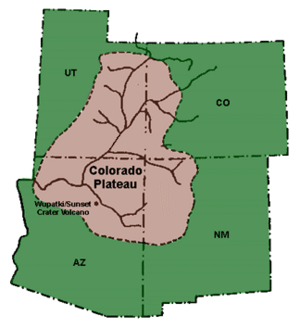Archaic–Early Basketmaker Era facts for kids
The Archaic–Early Basketmaker Era (7000–1500 BCE) was a time when the ancestors of the Ancient Pueblo People lived. They were different from other early people in the Southwest because they made special baskets. These baskets helped them gather and store food.
These early people ate wild seeds, grasses, nuts, and fruits. They also hunted small animals. They learned to find the best wild foods and small game in different areas. This changed how they moved and lived. They started using manos and metates to grind seeds and nuts.
After large animals like mammoths died out, hunters changed their tools. They used spears with smaller points. Later, they used atlatls (spear-throwers) and darts. Their homes were simple shelters made of wood, brush, and earth.
This era was followed by the Early Basketmaker II Era.
Contents
Life as Hunter-Gatherers
Climate Changes and Animals
Around 10,000 BCE, the climate became warmer and drier. This was a big reason why huge animals like mastodons and mammoths disappeared. These animals were hunted by even earlier people called Paleo-Indians. Besides climate change, more people and better hunting tools might have also caused the large animals to die out. By 6000 BCE, most large North American animals were gone. Only the bison antiquus (an ancient type of bison) survived on the Great Plains.
Around 5000 BCE, melting glaciers changed weather patterns on the Colorado Plateau. This led to a lot of soil erosion. Later, between 2500 and 2000 BCE, soil started to build up again. When the weather became too dry for plants, people moved to new areas. Over time, plants that needed a lot of water died out. Juniper and pinyon trees replaced spruce and fir forests in some areas. These climate changes made people move around to find food.
Seasonal Rounds for Food
The Paleo-Indians simply followed and hunted big animals. But the Archaic people had a new way of life. They followed "seasonal rounds." This meant they moved to familiar places based on when different plants were ready to harvest.
In spring, summer, and early fall, women gathered seeds, nuts, fruits, grasses, juniper berries, and mesquite beans. They stored any extra food for later. Men hunted small animals like rabbits using traps. In fall and winter, men hunted deer, bighorn sheep, bison, and antelope. They used the atlatl and darts for hunting.
| Amaranth | Goosefoot | Pinyon nuts | Ricegrass | Yucca |
|---|---|---|---|---|
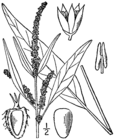 |
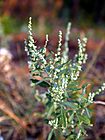 |
 |
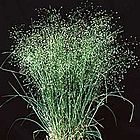 |
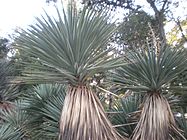 |
| Seeds and grass | Seeds and greens | Nuts | Seeds | Fruit |
Even though more people lived during this time, they traveled in small groups. They moved from dry lowlands to moister pinyon forests. Different types of projectile points (spear tips) were found in different areas. These tools were made from local stone. This shows that Archaic people traveled shorter distances. They used all the plants and animals in their local area. This meant they didn't need to go far to find food. The different tools might have helped groups identify themselves. These groups likely met and socialized with nearby tribes.
New Ways of Life
Archaeologists believe that people from southern Arizona and New Mexico moved north. They mixed with groups on the Colorado Plateau. This is based on new farming methods, home types, and tools. By the end of this period, some people started growing food. They moved around less. But farming didn't become a regular way of life until the 1st century CE, in the Early Basketmaker II Era.
Digging up their old campsites and rock shelters shows what Archaic-Early Basketmaker people did. They made baskets and tools. They gathered wild plants. They also hunted and prepared animals. They used stone-lined storage pits, both inside and outside their homes. This shows they were starting to settle down, not just move all the time.
Basketmaker Origins
The Basketmaker people likely came from different groups. Some were farmers who moved from the south. Others were local Archaic people who learned to farm. For example, people in the Mogollon Rim area of New Mexico grew maize (corn) and lived a more settled life even before the Early Basketmaker people.
Tools and basket styles from the Early and Late Basketmaker II Era were similar to those of the San Pedro stage of the Cochise tradition. This suggests a connection between these groups.
To become a Basketmaker, Archaic people would have started growing corn. They would have moved less and lived in pit-houses. Other differences between the Archaic and Basketmaker cultures included basket types, symbols in rock art, burial customs, and the amount of goods they traded.
Simple Shelters
The people of the Archaic–Early Basketmaker Era were nomadic hunter-gatherers. They moved across the Colorado Plateau to hunt and gather plants. So, their homes were easy to build. These groups often lived in rock shelters or in simple brush shelters and lean-tos out in the open.
They built their homes by digging a shallow pit. Then, they made a frame of wooden logs in a cone, dome, or tent shape. They covered these frames with brush and earth. This acted as a seal to protect them from the weather. Sometimes, rocks were placed around the base of the shelter. They also used fire pits inside their homes. These shallow-pit homes were an early version of the Basketmaker pit-houses.
In summer, they made campsites at high places, like on top of mesas or ridges. They also had temporary camps in mountains, low mesas, and near vernal pools (ponds formed by spring runoff). Later in this period, they started building more permanent structures at lower elevations.
Tools and Goods
Here are some items found at Archaic-Early Basketmaker sites:
- Stone scrapers, tool-making debris, projectile points, knives, and grinding tools.
- Simple manos and metates to grind wild nuts and seeds.
- Spears, atlatls, and darts.
- Snares for hunting.
- Baskets for gathering and storage.
- Rope and sandals.
- Clothing made from animal hides.
- Small animal figurines (like bighorn sheep, elk, deer) made from twigs.
- Tools and objects made from bone and wood.
Archaic-Early Basketmaker Sites
- Chaco Canyon: Over 70 campsites from 7000 to 1500 BCE are found in Chaco Canyon, New Mexico. One famous site is Atlatl Cave.
- Chinle Valley: Lukachukai and Salina Springs in northeastern Arizona are late Archaic-Early Basketmaker sites.
- Cove–Red Valley Area: Located in New Mexico.
- LaPlata Valley: Found in northwestern New Mexico and southwestern Colorado. For Colorado sites, see Colorado LaPlata sites.
- Mesa Verde Region: A dome-shaped Archaic shelter was found near Mesa Verde, Colorado.
- Navajo Mountain Area: Dust Devil Cave, dating to about 6000 BCE, is on Navajo Mountain in Arizona.
- Pecos Area: Five Archaic-Early Basketmaker sites were found in the Pecos River valley. These were likely used for hunting deer and gathering plants. Eight more hunting sites were found in nearby mountains. Three pit-houses from the later part of this period were also discovered.
- Tohatchi Flats: Located in New Mexico.
- Ute Mountain: Sites on Ute Mountain are considered late Archaic/Early Basketmaker. However, their dates (500 BCE – 100 CE) might show how advanced their tools and culture were, rather than just the time period.
Transition Sites
Some sites show a change towards Basketmaker traditions:
- Upper Gunnison River Basin: From about 8,000 to 3,000 years ago (roughly 6000 to 1000 BCE), people lived in homes and had storage systems similar to the Basketmaker II and San Pedro phase of the Cochise tradition.
- Yarmony House: Two pit-houses, dating to about 4000 BCE, look like Basketmaker pit-houses. One home was about 19.7 feet (6 meters) wide with an 11-foot (3.4 meter) front room. Inside, there was a fire pit, stone-lined storage pits, animal bones, and tools for grinding wild food. The many animal bones (elk, deer, rabbit) suggest the site was used in winter or when food was scarce. This site is in Eagle County, Colorado.


